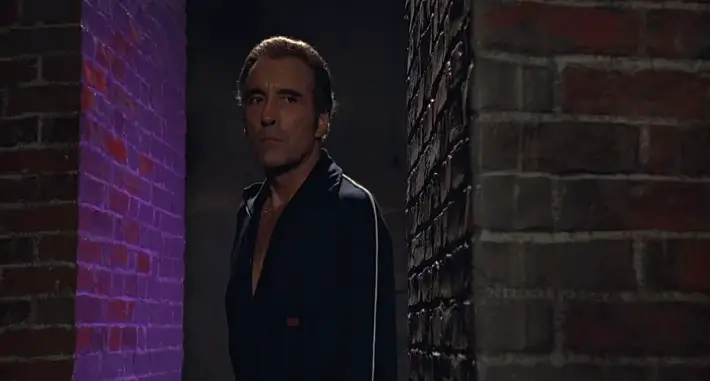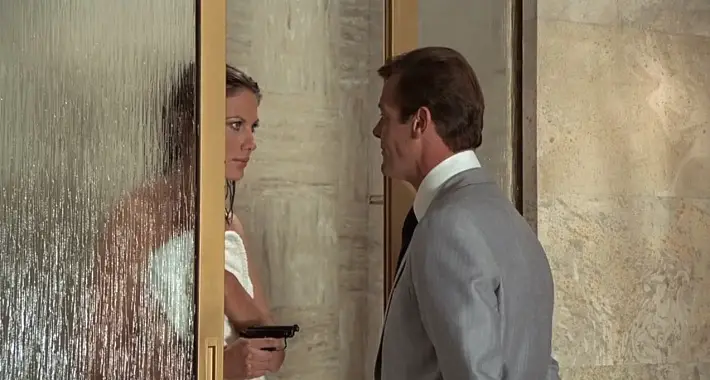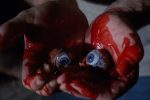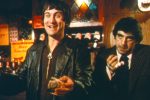The Man with the Golden Gun (1974) – Film Review
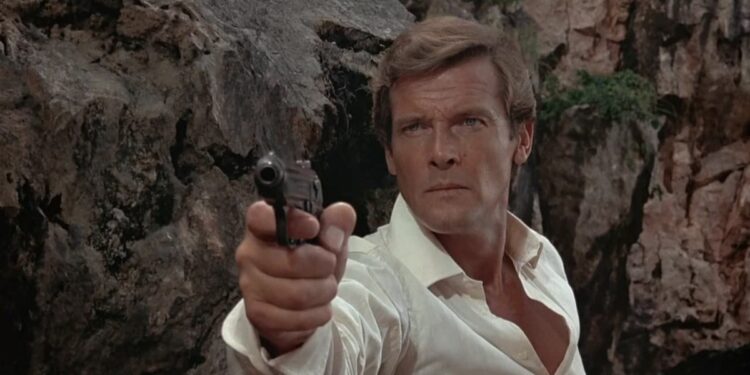
Director: Guy Hamilton
Cast: Roger Moore, Christopher Lee, Britt Ekland
Certificate: PG
by @Roger Crow
Roger Moore’s second outing as 007 was the one that almost got away. Released a year after Live and Let Die, it wasn’t even a blip on my radar until 1977 when The Spy Who Loved Me hit theatres, and I suddenly wondered what had happened to this “stealth Bond”. (I eventually saw it as a double bill with Moonraker, so that obsession with enjoying every 007 film at the cinema from 1973 onwards was soon put to bed).
And to my surprise it turns out to be one of the most enjoyable viewings on this 007 marathon, largely because I’d forgotten how good it is.
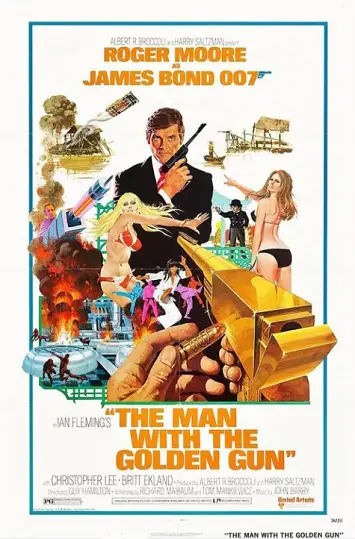 This time James Bond tackles arch assassin Francisco Scaramanga, the three-nippled gunman who charges a hefty price for his services, and is essentially the anti-007. Yes, they’re both professional killers, as they remark in a scene gloriously imitated by Coogan and Brydon in The Trip. One does it for queen and country and the other is in it for the money. Naturally Scaramanga wants to kill Bond, which leads to a duel of sorts.
This time James Bond tackles arch assassin Francisco Scaramanga, the three-nippled gunman who charges a hefty price for his services, and is essentially the anti-007. Yes, they’re both professional killers, as they remark in a scene gloriously imitated by Coogan and Brydon in The Trip. One does it for queen and country and the other is in it for the money. Naturally Scaramanga wants to kill Bond, which leads to a duel of sorts.
“Touched a chord”
It’s the simplicity of the story which makes this work so well: alpha male assassin versus alpha MI6 spy. Moore looks terrific as Bond. Not that he didn’t in Live and Let Die, but here he’s settled into the role nicely, while Christopher Lee is splendid in his post-Hammer phase. He clearly relishes the role of 007’s nemesis, and with John Barry back on composing duties, there’s a sense of continuity to the franchise once more.
Lulu’s cracking title theme (lyrics penned by Don Black) sums up Scaramanga’s profession, gives us a roadmap of what to expect, and sells the premise brilliantly. It’s big, bold and pure showbiz rather than some simpering emo Bond theme which would later appear.
It doesn’t hurt that series veteran Richard Maibaum and Tom Mankiewicz craft a compelling yarn. Okay, purists might disagree, but the beauty of Bond movies is ‘more show, less tell’. And yes, there is the odd exposition dump, but when those action set pieces kick in, quite simply, wow.
The coveted gizmo this time is the Solex Agitator, which nobody in the real world gives two hoots about, like all good Mcguffins. Basically it’s something to do with solar power, and in an era when the energy crisis was a major problem, little wonder it touched a chord with many.
Maud Adams, in the first of two Bond appearances, is splendid as Andrea Anders, Scaramanga’s mistress and sacrificial pawn. And even though most of the time Britt Ekland’s Mary Goodnight is more of a liability than an assistant, she also adds glamour and a little humour. Women in the early Bonds usually had a raw deal, either playing psycho killers; office workers; sacrificial pawns, or generic love interests. Only a couple of kick-ass young women show any sort of backbone here, and that was to cash in on the Kung Fu craze of the era.
“Having a ball”
A pre-Fantasy Island Herve Villechaize adds humour and menace as the villain’s sidekick, Nick Nack, and there are some splendid set pieces.
(Inspired by Cubby Broccoli’s idea) MI6 set up a base in Hong Kong inside the wreck of the RMS Queen Elizabeth. With its lopsided hull and refashioned interior, it’s quite the sight thanks to production designer Peter Murton. As a side note, it’s also reminiscent of The Crooked House pub in the Midlands a) if you’re ever in the area, and b) if we’re ever allowed to go in pubs again.
Then there are those aforementioned stunts. JW Pepper, the tobacco-chewing law enforcer from Live and Let Die, was such a hit he was brought back for more; Clifton James was clearly having a ball as the comic relief copper on vacation. When he finally teams up with 007 after moments of thinking he’s seeing things, there’s THAT bridge jump.
Inspired by a 1972 stunt show, the producers thought the sight of a car ‘corkscrewing’ over a broken bridge would be perfect for a Bond movie. With computers mapping every element of the spectacle, and the brilliant two-way exchange between Bond and Pepper before the event, the result is almost cinematic gold, if it hadn’t been for the Swanee whistle on the soundtrack. Shame there’s not a version on the Blu-ray without that audio error.
“A great job”
Then there’s Scaramanga’s flying car, which is slightly less impressive, and the finale near Phuket. That idyllic Thai location, now known as ‘James Bond Island’, is one of the most memorable in the saga’s history. Little wonder it was briefly revisited in Tomorrow Never Dies 23 years later.
The Man with the Golden Gun is not a perfect movie by any means. Though comical when I was younger, Bond’s treatment of a street, or rather river urchin, is problematic. I only hope after the kid helped him with his boat, 007 did something to help. Yes, empathising with fictional characters. This latest lockdown really has taken its toll.
“Golden Gun” was savaged by some critics and wasn’t the huge success the backers had hoped. At times it feels a bit cheap, but as with LALD, I like the fact hundreds of troops don’t come to 007’s aid at the end.
At a little over two hours it’s just the right running time, and unsung editors Raymond Poulton and John Shirley do a great job of stitching together the action, drama and comedy in just the right amounts.
This would be the last Bond for three years, the longest gap between 007 films to that point. But Cubby Broccoli had a plan which would help prop up the British film industry for years, and it started with a soundstage for the next James Bond movie. More of which another time…
